MaryAnn Bernal's Blog, page 307
March 10, 2014
Crusader Castles - Crac des Chevaliers and Qal’at Salah El-Din
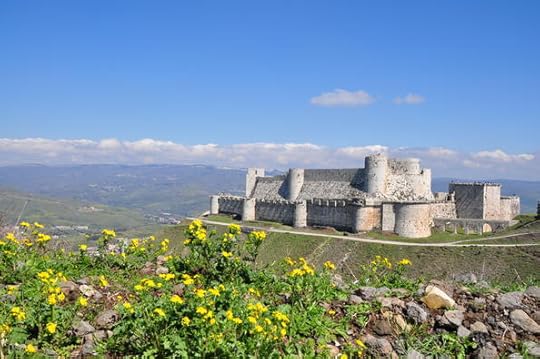
http://whc.unesco.org/en/list/1229
Crac des Chevaliers and Qal’at Salah El-Din
These two castles represent the most significant examples illustrating the exchange of influences and documenting the evolution of fortified architecture in the Near East during the time of the Crusades (11th - 13th centuries). The Crac des Chevaliers was built by the Hospitaller Order of Saint John of Jerusalem from 1142 to 1271. With further construction by the Mamluks in the late 13th century, it ranks among the best-preserved examples of the Crusader castles. The Qal’at Salah El-Din (Fortress of Saladin), even though partly in ruins, represents an outstanding example of this type of fortification, both in terms of the quality of construction and the survival of historical stratigraphy. It retains features from its Byzantine beginnings in the 10th century, the Frankish transformations in the late 12th century and fortifications added by the Ayyubid dynasty (late 12th to mid-13th century).
Outstanding Universal ValueBrief synthesis
These two castles represent the most significant examples illustrating the exchange of influences and documenting the evolution of fortified architecture in the Near East during the Byzantine, Crusader and Islamic periods. The Crac des Chevaliers was built by the Hospitaller Order of Saint John of Jerusalem from 1142 to 1271. With further construction by the Mamluks in the late 13th century, it ranks among the best-preserved examples of the Crusader castles. The Qal'at Salah El-Din, even though partly in ruins, retains features from its Byzantine beginnings in the 10th century, the Frankish transformations in the late 12th century and fortifications added by the Ayyubid dynasty (late 12th to mid-13th century). Both castles are located on high ridges that were key defensive positions.
Dominating their surrounding landscapes, the two castles of Crac des Chevaliers and Qal'at Salah El-Din are outstanding examples of fortified architecture relating to the Crusader period. Their quality of construction and the survival of historical stratigraphy demonstrate the interchange of defensive technology through features of each phase of military occupation.
Criterion (ii): The castles represent a significant development in the fortification systems, which substantially differed from the European rather more passive defence systems, and which also contributed to the development of the castles in the Levant. Within the castles that have survived in the Near East, the property represents one of the most significant examples illustrating the exchange of influences and documenting the evolution in this field, which had an impact both in the East and in the West.
Criterion (iv): In the history of architecture, the Crac des Chevaliers is taken as the best preserved example of the castles of the Crusader period, and it is also seen as an archetype of a medieval castle particularly in the context of the military orders. Similarly, the Qal'at Salah El-Din, even though partly in ruins, still represents an outstanding example of this type of fortification, both in terms of its quality of construction and the survival of its historical stratigraphy.
Integrity (2009)
Both castles are located on hill tops dominating visually the surrounding landscape. Apart from some undesirable interventions in the buffer zones, the integrity of the surroundings is well preserved. The illegal constructions (some houses, restaurants and hotels) that have been built near the castles will be demolished. There are also plans for cable cars and an open-air theatre, which would not be in harmony with the integrity of the landscape.
Authenticity (2009)
The Crac des Chevaliers was subject to some limited restoration during the French mandate, while the relatively recent additions by local villagers were removed. The medieval structures were liberated of accumulated soil. As a whole it has well retained its authenticity.
The Qal'at Salah El-Din is located in an isolated region and was not subject to any changes in recent centuries. It has partly fallen in ruins, and is now an archaeological site. It has been subject some restoration. For example, the main gate of the Ayyubid palace was restored in 1936, imitating the original structure. This type of restoration has now been abandoned, and the main emphasis is on consolidation and conservation. As a whole, the fortress has retained its historic condition and authenticity.
Protection and management requirements (2009)
The property is protected by the Syrian Antiquities Law (no. 222, revised in 1999) and by the Law of the Ministry of Local Administration (15/1971). The Ministry of Local Administration contributes to its protection in coordination with the Directorate of Antiquities and Museums (DGAM) and the local authorities.
The DGAM is the agency responsible for the protection of heritage sites and the funds for the maintenance and care of the castles are guaranteed from its annual budget. Each castle has a separate management system, organized jointly by the DGAM in collaboration with the local authorities. In the case of Crac des Chevaliers, the management system involves the village of al-Hosn, and in the case of the Qal'at Salah El-Din, the DGAM collaborates with the department located in the regional capital of Latakieh.
At the time of inscription, the DGAM was in the process of adopting a new administrative structure with new regulations that would be integrated so as to allow for a unified management system for the Castles of Syria. There is an on-going need to protect the eastern slopes of the Crac de Chevaliers from the development of the nearby modern city. The necessary administrative procedures have started to ensure the removal of irregular buildings near the castles.
Historical DescriptionIn the general perception, the two castles and various others that had a role in the Crusader period, used to be associated mainly with the European invaders. More recently, their national significance has however been recognized. In fact, the Fortress of Sayun (Château de Saône) was renamed Fortress of Saladin in 1957 to honour the sultan who conquered it in 1188. This castle has its origins in the 10th century, when the region formed part of the eastern boundary of the Byzantine Empire, which was confronted by the Fatimids, the Mirdasids and later the Seljuks, who all erect defensive structures based on the experiences of the Umayyads, Abbasids and early Byzantines. The Crac des Chevaliers dates from the 11th century, when it was known as the Castle of the Kurds. During the Crusader period, starting from the early 12th century, the Franks built or rebuilt several castles in the region.
Their leaders stayed either in fortified settlements or in castles such as the Fortress of Saladin. In the second half of the 12th century, the Latin lands were handed over to the Knights Hospitallers or Templars, who were then responsible for the construction until the castles were occupied by the Arabs in the late 12th or 13th centuries. Subsequently, Crac des Chevaliers was occupied by villagers resulting in various additional structures. The Fortress of Saladin, instead, due to its relative isolation, was abandoned and remained unused for centuries. In the 20th century, both castles have been subject to restoration as ancient monuments.
Source: Advisory Body Evaluation
Published on March 10, 2014 13:37
History's mysteries: 10 great archaeology puzzles
From lost people and places to mysterious objects, unexplained buildings and strange sculptures, our own history is itself a world of mystery.  Archaeologist and explorer Harrison Ford plummed the mysteries of the past in the 1981 film, "Raiders of the Lost Ark." Many intriguing archaeology puzzles remain unsolved.Source: Lucasfilm Ltd. Click on the link to check out the remaining 9 http://www.foxnews.com/science/slideshow/2013/09/20/history-mysteries-archaeology-mysteries-from-past/#slide=1
Archaeologist and explorer Harrison Ford plummed the mysteries of the past in the 1981 film, "Raiders of the Lost Ark." Many intriguing archaeology puzzles remain unsolved.Source: Lucasfilm Ltd. Click on the link to check out the remaining 9 http://www.foxnews.com/science/slideshow/2013/09/20/history-mysteries-archaeology-mysteries-from-past/#slide=1
 Archaeologist and explorer Harrison Ford plummed the mysteries of the past in the 1981 film, "Raiders of the Lost Ark." Many intriguing archaeology puzzles remain unsolved.Source: Lucasfilm Ltd. Click on the link to check out the remaining 9 http://www.foxnews.com/science/slideshow/2013/09/20/history-mysteries-archaeology-mysteries-from-past/#slide=1
Archaeologist and explorer Harrison Ford plummed the mysteries of the past in the 1981 film, "Raiders of the Lost Ark." Many intriguing archaeology puzzles remain unsolved.Source: Lucasfilm Ltd. Click on the link to check out the remaining 9 http://www.foxnews.com/science/slideshow/2013/09/20/history-mysteries-archaeology-mysteries-from-past/#slide=1
Published on March 10, 2014 13:31
History Trivia - Julius Caesar crosses the Rubicon and invaded Italy
March 10
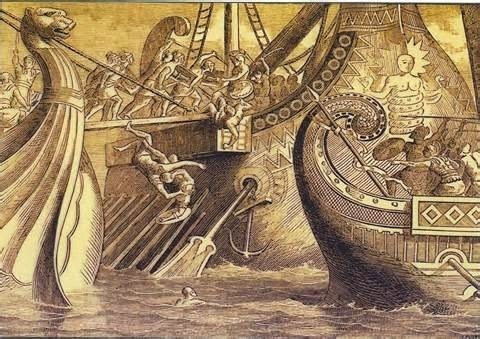
241 BC A crushing Roman naval victory over the Carthaginians in the Battle of Aegus ended the First Punic War.
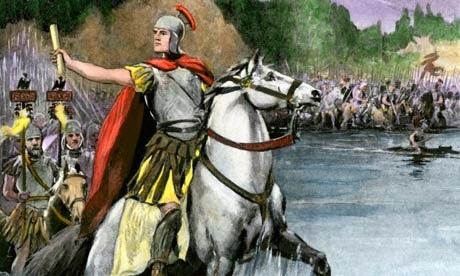
49 BC Julius Caesar crossed the Rubicon and invaded Italy.
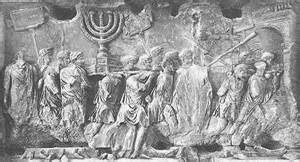
418 Jews were excluded from public office in the Roman Empire.
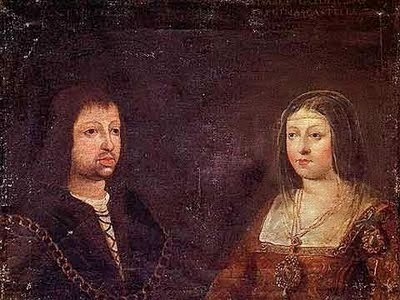
1452 Ferdinand II of Aragon was born. The marriage of Ferdinand to Isabella of Castile eventually resulted in a united Spain.
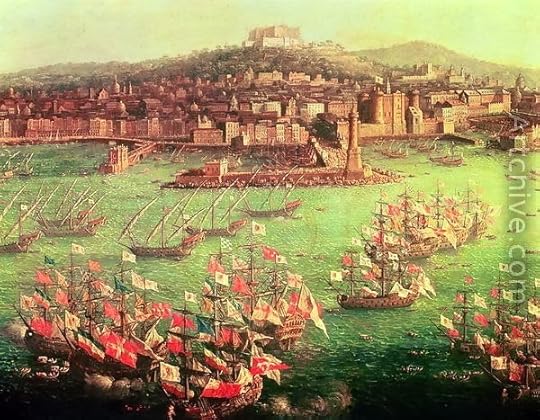
1624 England declared war on Spain.
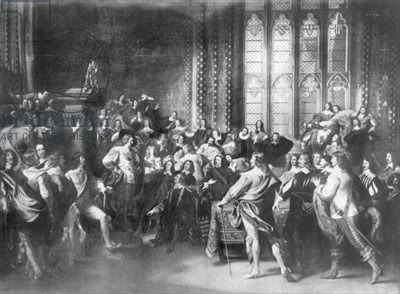
1629 Charles I began the Eleven Years Tyranny when he dissolved parliament.

241 BC A crushing Roman naval victory over the Carthaginians in the Battle of Aegus ended the First Punic War.

49 BC Julius Caesar crossed the Rubicon and invaded Italy.

418 Jews were excluded from public office in the Roman Empire.

1452 Ferdinand II of Aragon was born. The marriage of Ferdinand to Isabella of Castile eventually resulted in a united Spain.

1624 England declared war on Spain.

1629 Charles I began the Eleven Years Tyranny when he dissolved parliament.
Published on March 10, 2014 06:26
March 9, 2014
My review of My Nature Friends by Ngaire Elder

Ms. Elder has created a delightful teaching aid with Nature’s Friends. Children will enjoy learning the alphabet as they identify the various creatures living in their environment. There is a Field Notes section in the back of the book (printed editions only) where the child can record their sightings. Nature’s Friends is an excellent visual educational tool, which I highly recommend. http://www.amazon.com/My-Nature-Friends-Rhyming-Picture/dp/1493711172/ref=sr_1_2?ie=UTF8&qid=1394414644&sr=8-2&keywords=My+Nature+Friends
Published on March 09, 2014 18:24
Is this the World's Oldest Crown?
Mar. 07, 2014 - 3:43 - Trove of Israeli artifacts on display in New York City
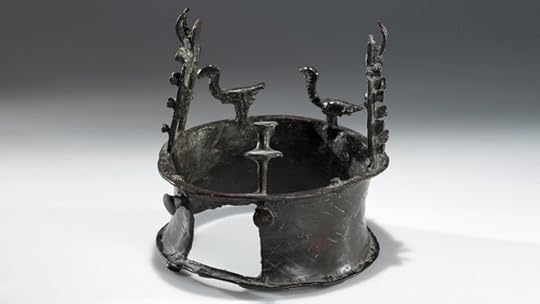 This Crown from the Copper Age is believed to be the oldest in existence. The artifact will be on display at The Institute for the Study of the Ancient World in Manhattan until June. (Collection of Israel Antiquities AuthorityPhoto © The Israel Museum, by Ardon Bar Hama)
This Crown from the Copper Age is believed to be the oldest in existence. The artifact will be on display at The Institute for the Study of the Ancient World in Manhattan until June. (Collection of Israel Antiquities AuthorityPhoto © The Israel Museum, by Ardon Bar Hama)
http://video.foxnews.com/v/3308980896001/is-this-the-worlds-oldest-crown/
The world’s oldest crown will be taking on Manhattan when it goes on display at a new exhibit on the city's Upper East Side.
The crown is a relic of the Copper Age, dating back some 6,000 years, and will be on display with 150 other artifacts from the era as part of the “Masters of Fire: Copper Age Art from Israel” exhibit opening this week at Institute for the Study of the Ancient World at New York University
“To the modern eye, it is stunning to see how these groups of people, already mastering so many new social systems and technologies, still had the ability to create objects of enduring artistic interest,” said Jennifer Y. Chi, ISAW Exhibitions Director and Chief Curator in a statement.
The Copper Age was when people discovered how to make implements and ritual objects out of copper and organize and glean products like milk and wool.
The show is considered to be the most comprehensive collection of artifacts from the era to be seen outside of Israel, according to local news site DNAinfo New York
The black-colored crown is shaped like a thick ring and adorned with vultures and doors protruding from the top.
It is believed to have played a part in burial ceremonies and its adornments are believed a model of a structure where bodies were allowed to decompose before burial.
Many of the objects are part of the Nahal Mishmar Hoard, which is a collection of over 400 objects that were found in a remote cave near the Dead Sea in 1961. The pieces include two clay statues of the Lady of Gilat and The Ram of Gilat and a full array of Copper Age figurines made from stone, ivory, bone, and clay as well as a scepter decorated with horned animals, a copper container designed to look like a woven basket, and clay goblets and bowls.
“The fascinating thing about this period is that a burst of innovation defined the technologies of the ancient world for thousands of years,” Daniel M. Master, Professor of Archaeology at Wheaton College and a member of the curatorial team, said in a statement. “People experimented with new ways to use not just copper, but also leather, ceramics, and textiles—sometimes successfully, sometimes not.”
http://www.foxnews.com/science/2014/02/13/copper-age-crown-world-oldest-to-be-on-display-in-manhattan/
 This Crown from the Copper Age is believed to be the oldest in existence. The artifact will be on display at The Institute for the Study of the Ancient World in Manhattan until June. (Collection of Israel Antiquities AuthorityPhoto © The Israel Museum, by Ardon Bar Hama)
This Crown from the Copper Age is believed to be the oldest in existence. The artifact will be on display at The Institute for the Study of the Ancient World in Manhattan until June. (Collection of Israel Antiquities AuthorityPhoto © The Israel Museum, by Ardon Bar Hama) http://video.foxnews.com/v/3308980896001/is-this-the-worlds-oldest-crown/
The world’s oldest crown will be taking on Manhattan when it goes on display at a new exhibit on the city's Upper East Side.
The crown is a relic of the Copper Age, dating back some 6,000 years, and will be on display with 150 other artifacts from the era as part of the “Masters of Fire: Copper Age Art from Israel” exhibit opening this week at Institute for the Study of the Ancient World at New York University
“To the modern eye, it is stunning to see how these groups of people, already mastering so many new social systems and technologies, still had the ability to create objects of enduring artistic interest,” said Jennifer Y. Chi, ISAW Exhibitions Director and Chief Curator in a statement.
The Copper Age was when people discovered how to make implements and ritual objects out of copper and organize and glean products like milk and wool.
The show is considered to be the most comprehensive collection of artifacts from the era to be seen outside of Israel, according to local news site DNAinfo New York
The black-colored crown is shaped like a thick ring and adorned with vultures and doors protruding from the top.
It is believed to have played a part in burial ceremonies and its adornments are believed a model of a structure where bodies were allowed to decompose before burial.
Many of the objects are part of the Nahal Mishmar Hoard, which is a collection of over 400 objects that were found in a remote cave near the Dead Sea in 1961. The pieces include two clay statues of the Lady of Gilat and The Ram of Gilat and a full array of Copper Age figurines made from stone, ivory, bone, and clay as well as a scepter decorated with horned animals, a copper container designed to look like a woven basket, and clay goblets and bowls.
“The fascinating thing about this period is that a burst of innovation defined the technologies of the ancient world for thousands of years,” Daniel M. Master, Professor of Archaeology at Wheaton College and a member of the curatorial team, said in a statement. “People experimented with new ways to use not just copper, but also leather, ceramics, and textiles—sometimes successfully, sometimes not.”
http://www.foxnews.com/science/2014/02/13/copper-age-crown-world-oldest-to-be-on-display-in-manhattan/
Published on March 09, 2014 06:57
History Trivia - David Riccio, secretary and advisor to Mary, Queen of Scots, murdered
March 9

1074 Reforming Pope Gregory VII excommunicated all married Roman Catholic priests.

1440 Saint Frances of Rome, founder of the Oblates of Mary, died.
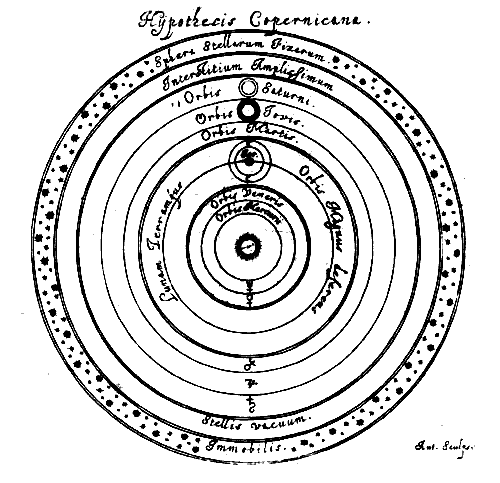
1497 Nicolaus Copernicus 1st recorded astronomical observation.
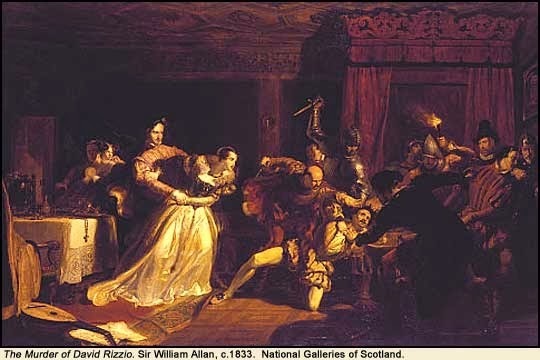
1566 David Riccio, secretary and advisor to Mary, Queen of Scots, was murdered in the Palace of Holyroodhouse, Edinburgh, Scotland.

1074 Reforming Pope Gregory VII excommunicated all married Roman Catholic priests.

1440 Saint Frances of Rome, founder of the Oblates of Mary, died.

1497 Nicolaus Copernicus 1st recorded astronomical observation.

1566 David Riccio, secretary and advisor to Mary, Queen of Scots, was murdered in the Palace of Holyroodhouse, Edinburgh, Scotland.
Published on March 09, 2014 05:01
March 8, 2014
Congratulations K. Meador - Authorsdb Top Ten
 http://authorsdb.com/authors-directory/4488-k-meador
http://authorsdb.com/authors-directory/4488-k-meador
Pen NamekmeadorWebsitehttp://www.authorkmeador.comBloghttp://inthemidst-km.blogspot.com/Twitter@authorkmeadorMy Facebook Friend MeFacebook PageLike My PageGoodReadsBecome a FanLinkedInConnect With MeGoogle+Add Me To Your CircleMy PinterestRepin & Follow MeAuthorGraphGet My AutographBioBorn in Jacksonville, Florida and raised in Texas since she was four years old, K-Trina Meador is the youngest of five children. Growing up in Cross Plains, Texas and being raised on a seventy acre farm gives her an appreciation for country life and the small town community. She has two grown sons.
She enjoys hiking, snorkeling, scuba diving, photography and aviation. She is currently traveling from state to state working as an aircraft mechanic and author. Current locations include: Hawaii, Georgia, South Carolina and currently, Oklahoma.
Her first novel, Journey to Freedom, was published in April 2012. Followed by Their Journey Begins in November 2012 and Transcendence in December 2012. Most recent publication is The Knight of the Dixie Wilds in May 2013.Where I LiveYukon, Oklahoma
Published on March 08, 2014 17:37
Authorsdb Book Cover Contest - The Briton and the Dane Timeline cover featured

Steven Novak, illustrator - Novakillustration.comCategory: Action and AdventureBook Cover Contest I appreciate your support VOTE NOW http://fb.me/18vigOSRI
Published on March 08, 2014 15:29
New Release - My Nature Friends: A-Z Rhyming Picture Book
 My Nature Friends is a superbly illustrated A-Z alphabet book, all about stimulating imagination, inspiring learning and encouraging a lifelong thirst for natural knowledge in 5-10 year old boys and girls. Inside, there is stacks to do. Enchanting rhymes, sprightly illustrations to be coloured in, and a splendid, interactive, ‘Field Note’ section for those discoveries your child makes while out-and-about. Parents will encounter all sorts of crazy animals they can learn about too! A charming addition to your child’s library, My Nature Friends is full of ingenious fun and will provide hours and hours of amusement for the whole family.
My Nature Friends is a superbly illustrated A-Z alphabet book, all about stimulating imagination, inspiring learning and encouraging a lifelong thirst for natural knowledge in 5-10 year old boys and girls. Inside, there is stacks to do. Enchanting rhymes, sprightly illustrations to be coloured in, and a splendid, interactive, ‘Field Note’ section for those discoveries your child makes while out-and-about. Parents will encounter all sorts of crazy animals they can learn about too! A charming addition to your child’s library, My Nature Friends is full of ingenious fun and will provide hours and hours of amusement for the whole family.Amazon US
http://www.amazon.com/My-Nature-Friends-Rhyming-Picture/dp/1493711172/ref=sr_1_1?ie=UTF8&qid=1394230591&sr=8-1&keywords=My+Nature+Friends+by+Ngaire+Elder
Amazon UK
http://www.amazon.co.uk/My-Nature-Friends-Rhyming-Picture/dp/1493711172/ref=sr_1_1?ie=UTF8&qid=1394230918&sr=8-1&keywords=my+nature+friends+by+ngaire+elder
Published on March 08, 2014 05:00
History Trivia - Anne Stuart becomes regnant of England, Scotland, and Ireland.
March 8

1144 Pope Celestine III, whose pontificate lasted six months, died.

1495 Saint John of God, patron of hospitals and the dying, was born.
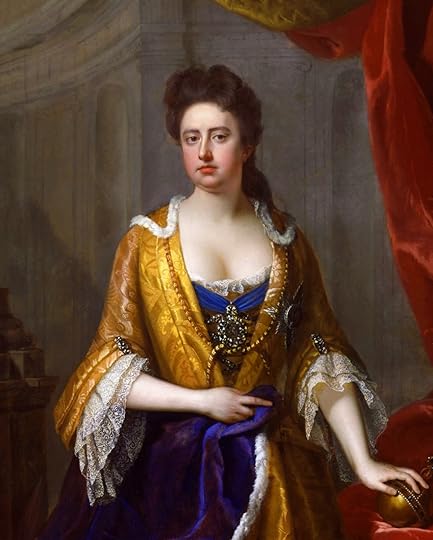
1702 Anne Stuart, sister of Mary II, became Queen regnant of England, Scotland, and Ireland.

1144 Pope Celestine III, whose pontificate lasted six months, died.

1495 Saint John of God, patron of hospitals and the dying, was born.

1702 Anne Stuart, sister of Mary II, became Queen regnant of England, Scotland, and Ireland.
Published on March 08, 2014 04:30



